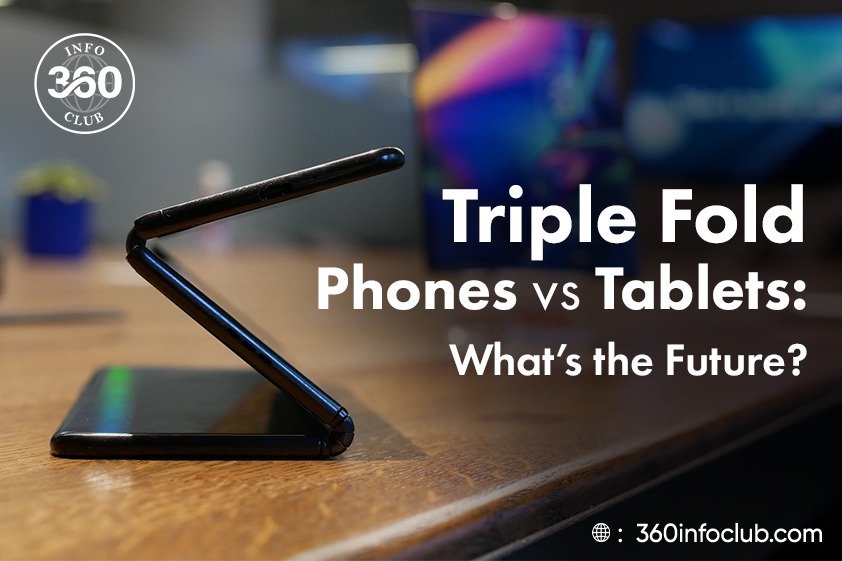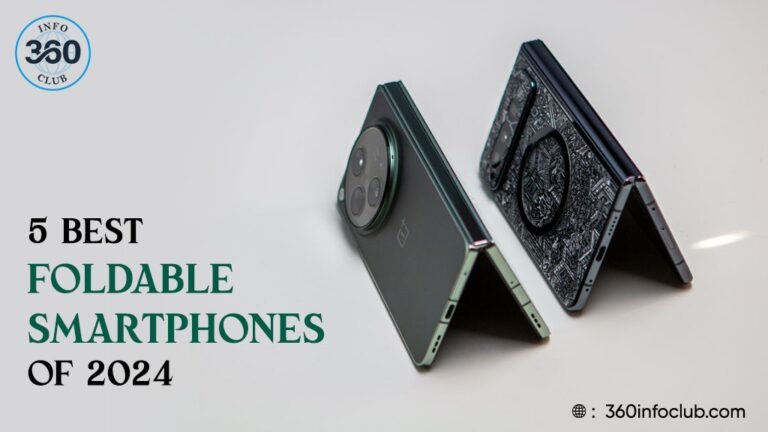Triple Fold Phones vs Tablets: What’s The Future?
Technological advancements are allowing smartphones and tablets to become foldable at an alarming rate. As smartphones and tablets become increasingly multifunctional, the distinction between them is becoming blurrier. It is important to note the advent of Triple Fold Phones in this space as this technology promises to revolutionize our interaction with mobile devices. This blog explores the rise of foldable devices. Here are some comparisons between Triple Fold Phones and traditional tablets and predictions about their future.
Growing Trend of Foldable Phones and Tablets
There is no denying that foldable devices are taking the tech world by storm, with brands like Samsung, Huawei, and Microsoft leading the way. With these devices, consumers can easily switch between smartphones and tablets, allowing seamless multitasking. With the introduction of foldable technology, there is now a new category of phone: Triple Fold Phones, which offer even more flexibility and screen space. Mobile devices are increasingly used for work, entertainment, and everyday tasks, and their foldability reflects this trend.
How Technology Is Evolving Towards Multifunctional Devices
As digital demands accelerate, multifunctional devices are a natural evolution. Mobile devices must adapt to multiple scenarios: checking emails on the go, streaming videos, or using productivity apps. In this case, Triple Fold Phones offer portability, enhanced screen size, and versatility. Rather than carrying multiple devices, these innovations provide users with more multitasking options on smartphones and tablets.
What Are Triple Fold Phones?
A Triple Fold Phone is a foldable device with not one, but two folding hinges. It is able to expand into three sections. The devices provide a tablet-sized display when fully unfolded, but fold into a compact smartphone shape when folded down. It can expand to even larger screens than traditional foldable phones, which fold in half. Users who require more display space for gaming, productivity, or multimedia will find them ideal.
Evolution of Tablets: A Brief Overview
Tablets emerged in the early 2000s, and Apple’s iPad revolutionized the market in 2010. Tablets have become more powerful over time, offering features like split-screen multitasking, stylus support, and laptop-level performance in devices like the iPad Pro and Microsoft Surface. Despite this, foldable devices are putting pressure on tablets. Although tablets remain popular for content consumption, creative work, and professional tasks, the rise of foldable especially Triple Fold Phones-poses a threat to their dominance.
Key Features Comparison: Triple Fold Phones vs Tablets
Portability
- Triple Fold Phones: Easy to carry when folded, with a smartphone-like user experience.
- Tablets: Usually larger, designed for stationary use or transport.
Screen Size
- Triple Fold Phones: Extendable to provide a larger display, but are slightly smaller than tablets.
- Tablets: These devices offer larger, static screens, ideal for tasks that require a large display.
Functionality
- Triple Fold Phones: Versatile, combining phone, tablet, and sometimes even laptop-like experiences.
- Tablets: Excellent for productivity, creative work, and entertainment, but less versatile than foldable devices.
Multitasking
- Triple Fold Phones: Support multiple apps simultaneously on different sections of the screen.
- Tablets: Allow multitasking, but have only one screen.
Use Cases and Target Audience
Triple Fold Phones are designed for users who want the best of both smartphones and tablets. They are perfect for professionals, gamers, and tech enthusiasts who need a portable device with a large screen for multitasking and media consumption. On the other hand, tablets still appeal to users who need a more traditional device for creative tasks, like digital artists. In addition, they appeal to those who prefer a larger, static screen for reading or editing documents.
Market Demand and Trends
The market is interested in Triple Fold Phones, which use foldable technology. It is attractive to consumers to own a single phone that serves multiple purposes, making foldable phones an area for future development. However, innovation has slowed for tablets compared with foldables. As 5G connectivity, enhanced multitasking, and flexible designs become more popular, Triple Fold Phones could eventually capture significant market share.
The Future of Tablets: Will They Survive?
Despite Triple Fold Phones, tablets are unlikely to disappear altogether. Tablets are still exceptional for a variety of specific uses, such as educational tools, digital drawing, and professional productivity. Tablets may need to adapt to remain relevant as foldable devices evolve. As technology evolves, we might see more hybrid devices or tablets with foldable elements.
Conclusion
It’s just the beginning of the tablet vs. Triple Fold battle. Mobile technology continues to evolve with Triple Fold Phones, offering consumers unprecedented levels of versatility. In the future of technology, both devices will have a place. Despite this, Triple Fold Phones may gain a competitive edge as multifunctional devices become the new standard for consumers.







